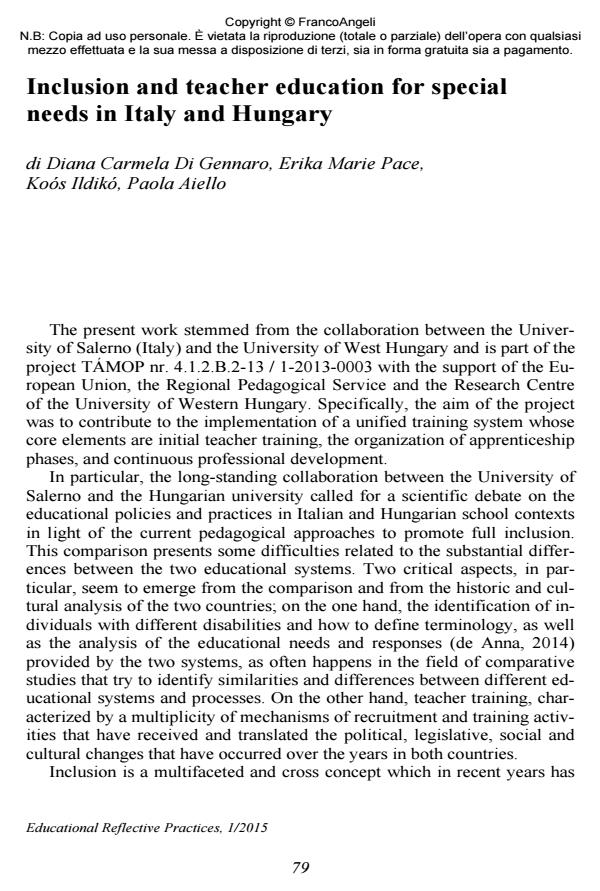Inclusion and teacher education for special needs in Italy and Hungary
Titolo Rivista EDUCATIONAL REFLECTIVE PRACTICES
Autori/Curatori Diana Carmela Di Gennaro, Erika Marie Pace, Koós Ildikó, Paolo Aiello
Anno di pubblicazione 2015 Fascicolo 2015/1
Lingua Inglese Numero pagine 11 P. 79-89 Dimensione file 86 KB
DOI 10.3280/ERP2015-001006
Il DOI è il codice a barre della proprietà intellettuale: per saperne di più
clicca qui
Qui sotto puoi vedere in anteprima la prima pagina di questo articolo.
Se questo articolo ti interessa, lo puoi acquistare (e scaricare in formato pdf) seguendo le facili indicazioni per acquistare il download credit. Acquista Download Credits per scaricare questo Articolo in formato PDF

FrancoAngeli è membro della Publishers International Linking Association, Inc (PILA)associazione indipendente e non profit per facilitare (attraverso i servizi tecnologici implementati da CrossRef.org) l’accesso degli studiosi ai contenuti digitali nelle pubblicazioni professionali e scientifiche
The present work stemmed from the collaboration between the University of Salerno (Italy) and the University of West Hungary and is part of a project aiming at implementing a unified educational training system whose core elements are initial teacher training, the organization of apprenticeship phases, and continuous professional development. Despite the clear and substantial differences between the school systems of the two countries, the aim that seems to unite the Italian and the Hungarian educational policies is the realization of truly inclusive school contexts within which teacher training takes on a leading role as teachers are the real guarantee that the process of inclusion in the educational and didactic field will be fully realized. With this aim, in both countries there is an ongoing debate about the need of a new teacher professionalism able to face the heterogeneity of today’s school contexts
Diana Carmela Di Gennaro, Erika Marie Pace, Koós Ildikó, Paolo Aiello, Inclusion and teacher education for special needs in Italy and Hungary in "EDUCATIONAL REFLECTIVE PRACTICES" 1/2015, pp 79-89, DOI: 10.3280/ERP2015-001006